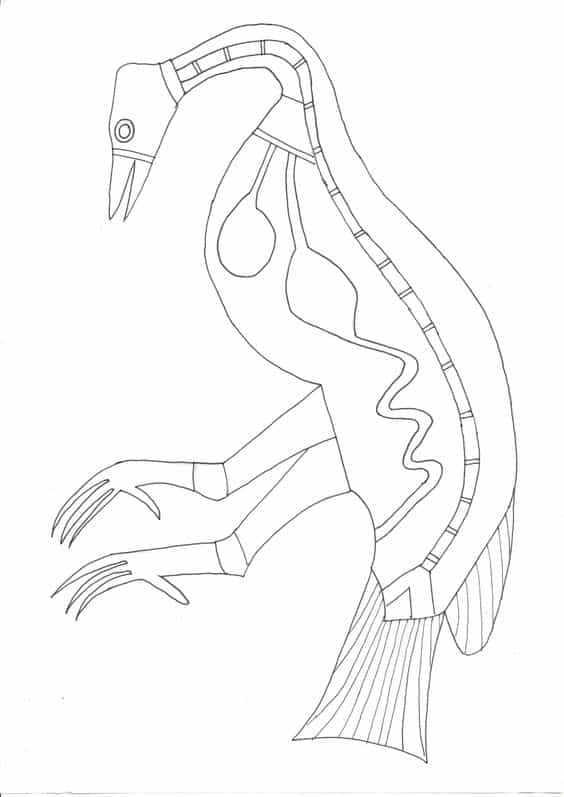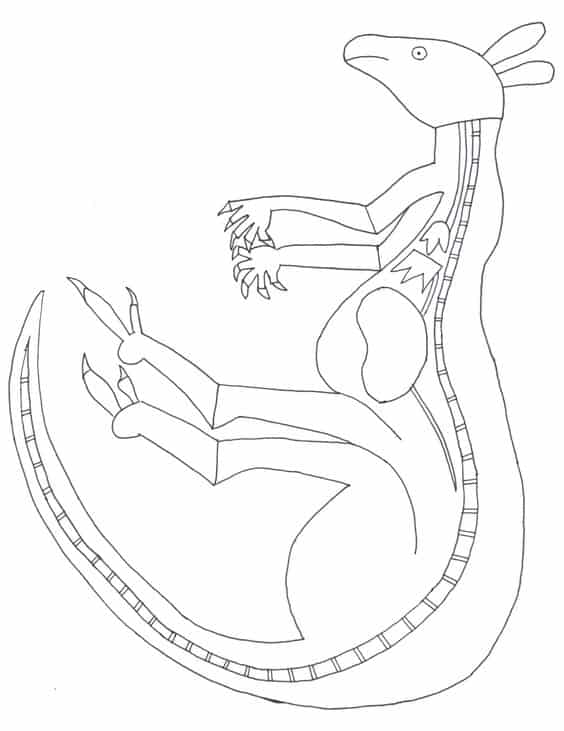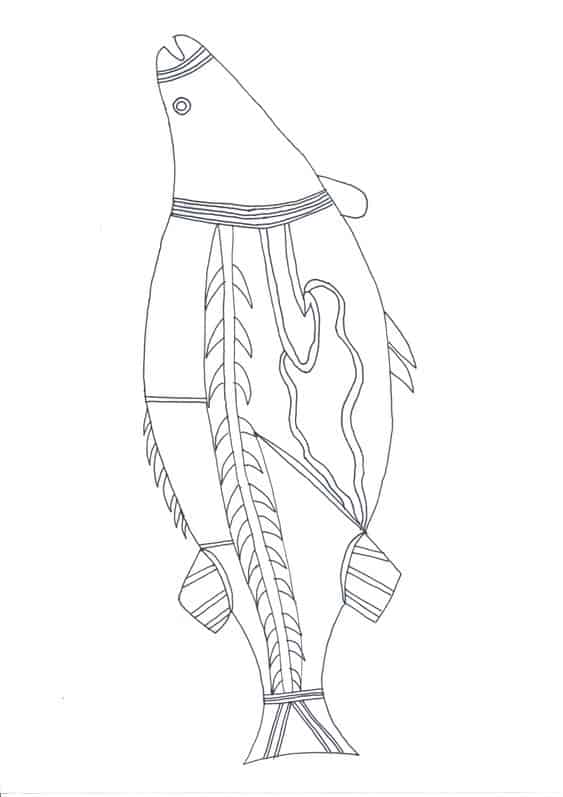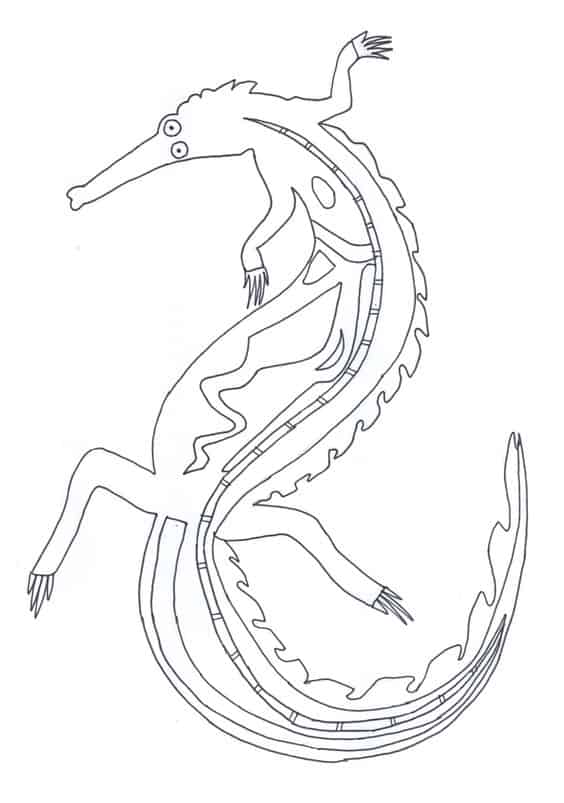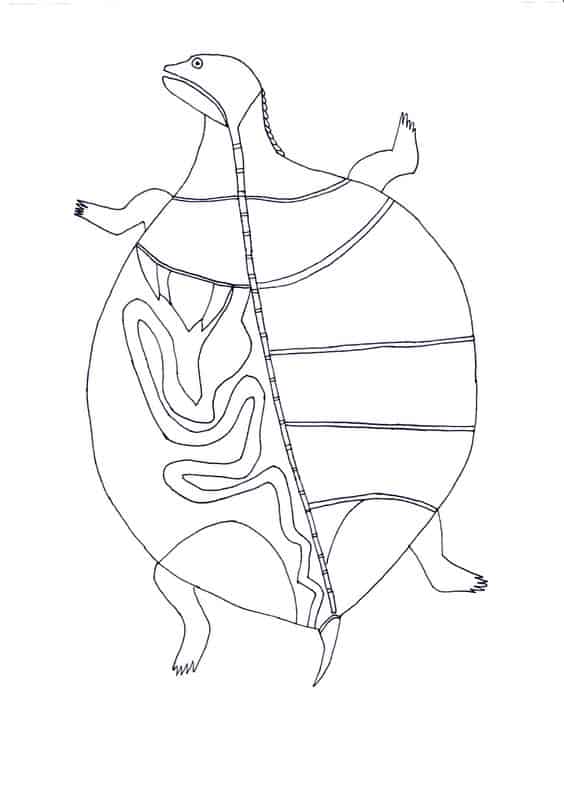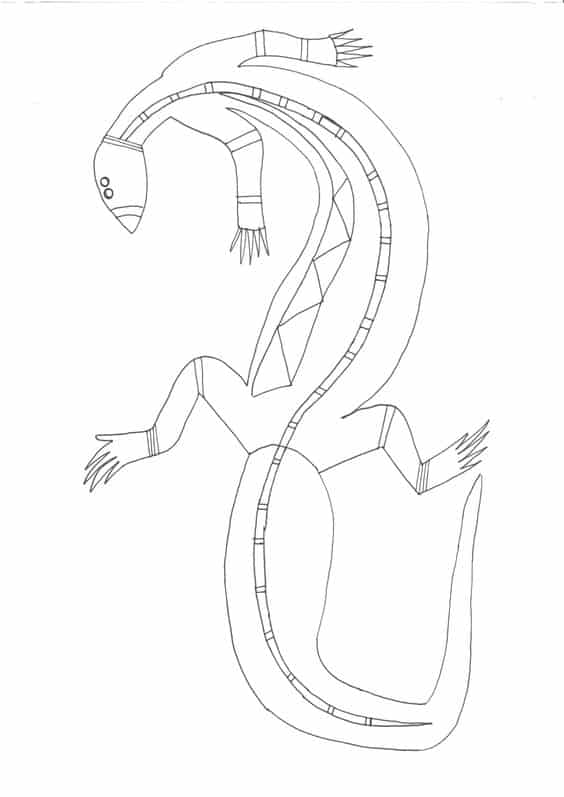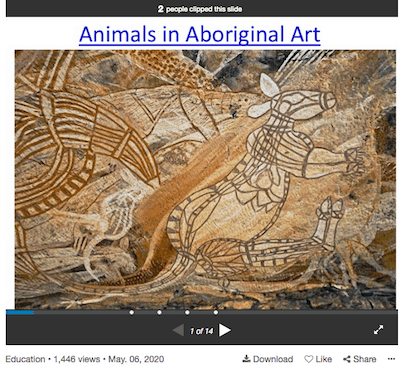Animals in Aboriginal Art
A teaching resource
The aim of this article is to give teachers background and resources to teach about Animals in Aboriginal art. It includes templates for an in-class activity and a PowerPoint slideshow.
Traditional Aboriginal people were hunters and gatherers. They had an intricate knowledge of animal behavior. Animals depicted in Aboriginal art are those that are a part of a songline or Dreamtime story. Aboriginal animal art was often an illustration of this story told to initiates during a ceremony.
Songlines or Dreamtime stories are more than tales they are oral histories of religious importance. These stories have a deeper meaning known to initiated men and learned through song and ceremony.
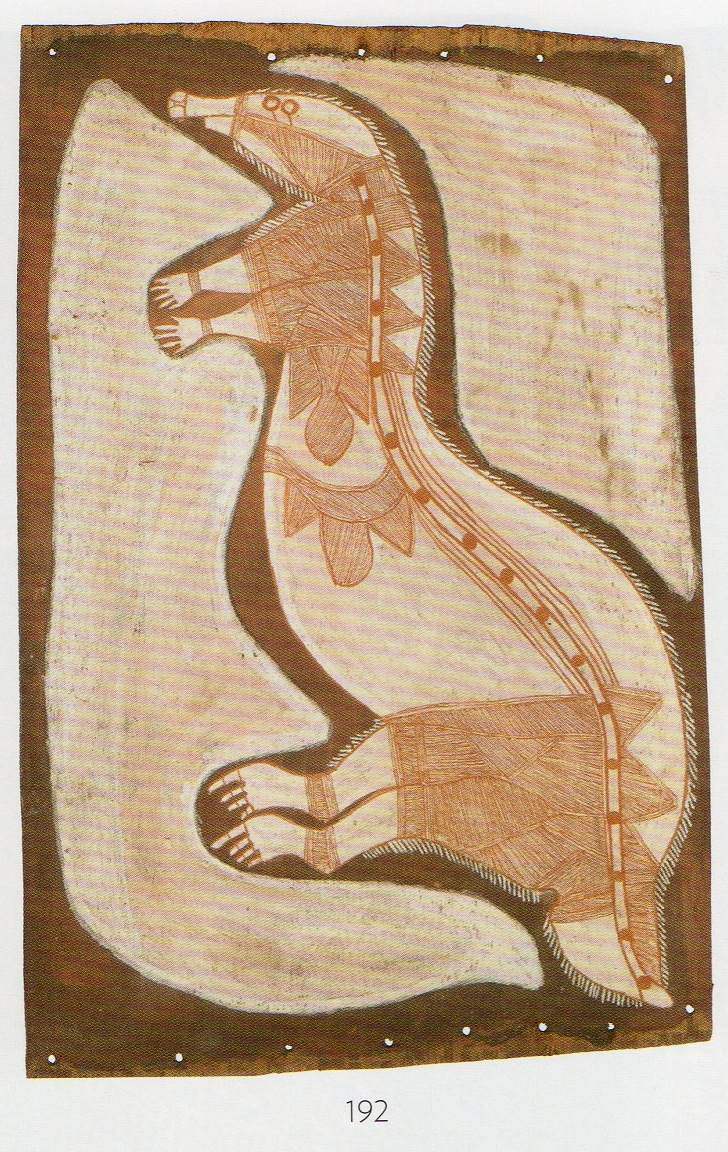
Echidna by
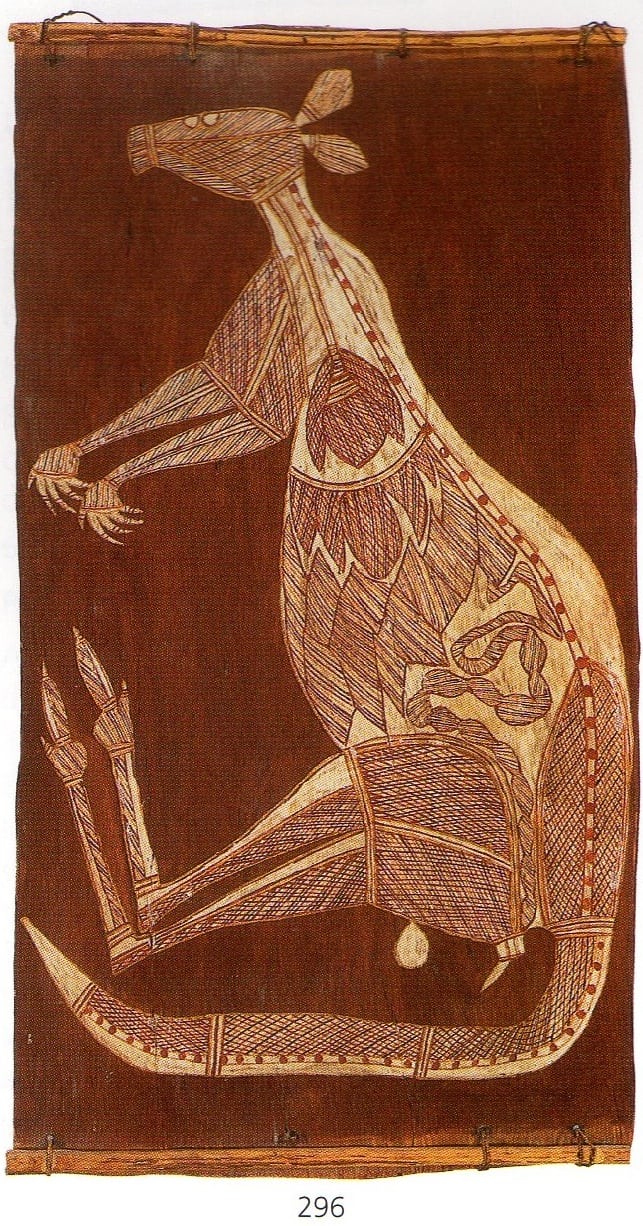
Different clans have different songlines and therefor depict different animals in their art. When you see an animal in aboriginal art it is worth remembering it isn’t just an animal it is a part of a much larger spiritual story.
It is truly not surprising animals are in so many aboriginal songlines and dreamings. Aboriginal people have co-existence with their environment for over 50,000 years. They have developed a deep knowledge of the animals and their habits.
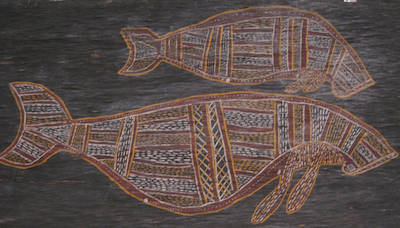
History of Animals in Aboriginal Art
Aboriginal Rock Art is some of the oldest existing art on earth. The very earliest Aboriginal rock art depicts animals. Some of this rock art even show animals that have since become extinct.
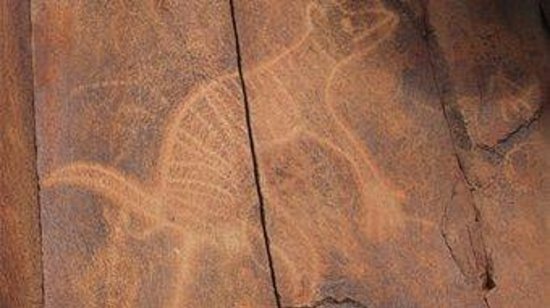
A famous example of this is the Thylacine or Tasmanian Tiger. A Tasmanian tiger appears in rock art in the Pilbara in Northern Australia. It went extinct in this area eleven thousand years ago at the end of the last ice age.
Right: Animals in Arnhemland Rock Art
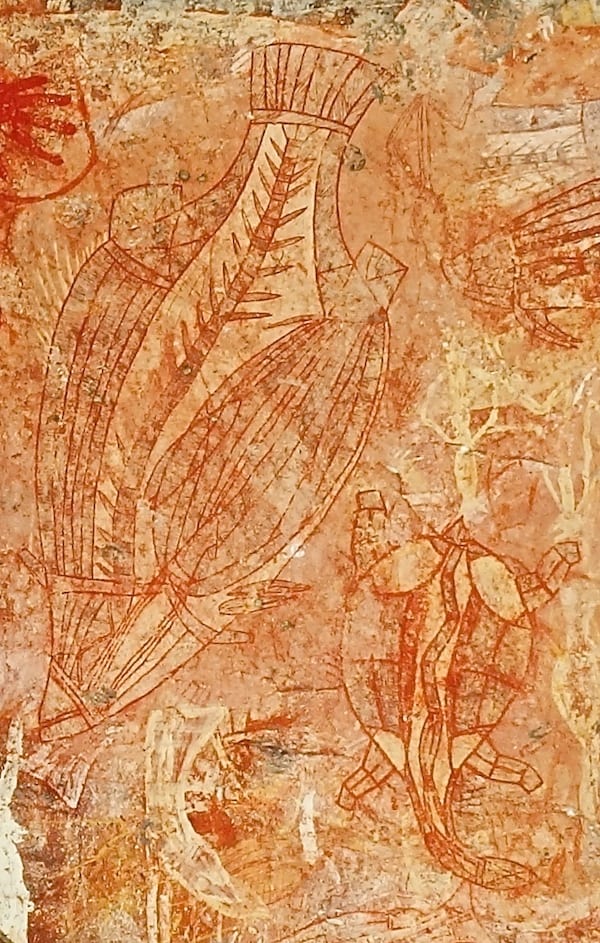
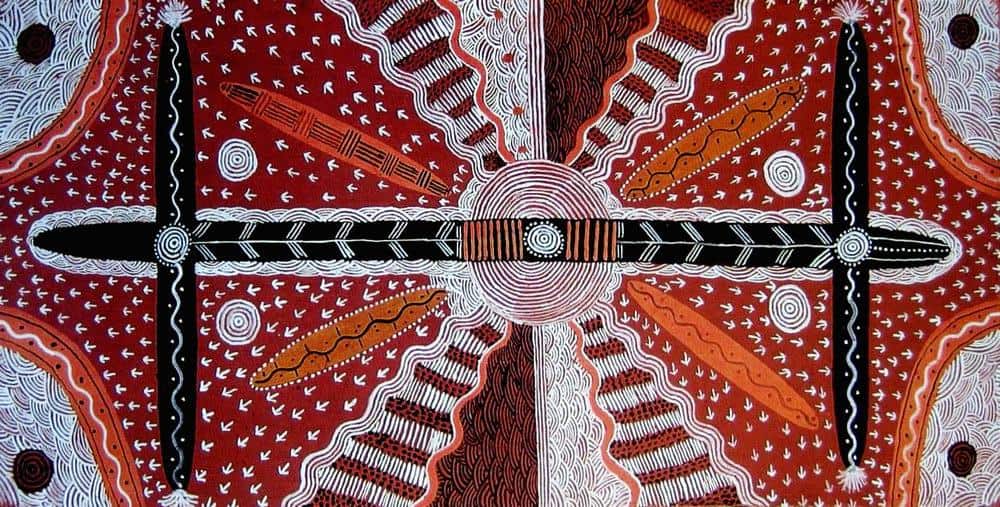
Central Australian or Dot Dot Aboriginal Animal songlines
Teachers need to be aware that traditionally animals in Central Australian songlines and art were not visually apparent. The animal in Central Australian or dot dot art was often only depicted by the tracks it left or in the context of the story. In choosing an art activity for students I think it is much better to draw on a different style of aboriginal art.
X-Ray Aboriginal art Animals
In Western Arnhem Land art animals show the inside and outside parts of the body. This traditional way of depicting animals is also called X- ray art.
By looking at examples of this type of Aboriginal Art certain patterns appear that define this distinct aboriginal art style. By following the same rules used by aboriginal artists students can produce aboriginal art in a more traditional style.
Background is monochromatic or a single colour
Base layer of the animal is white above the monochrome background
Details use four different colours. Red Yellow and black white
Details infilled using cross-hatching and parallel lines
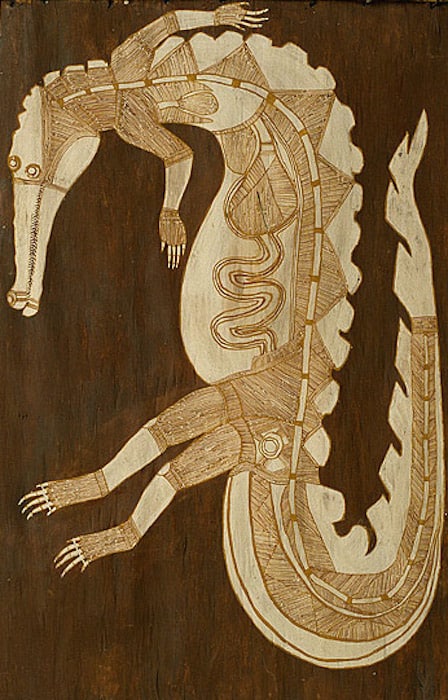
Aboriginal Animal Art Templates
I have attached some Aboriginal Art Animal templates based on art by aboriginal artists which you are welcome to use.
Students should be encouraged to fill in areas with cross-hatching or parallel lines rather than solid blocks of color.
The templates are free to use and original designs but draw heavily on artworks by Lofty Bardayal Nadjamerrek and Dick Murra Murra.
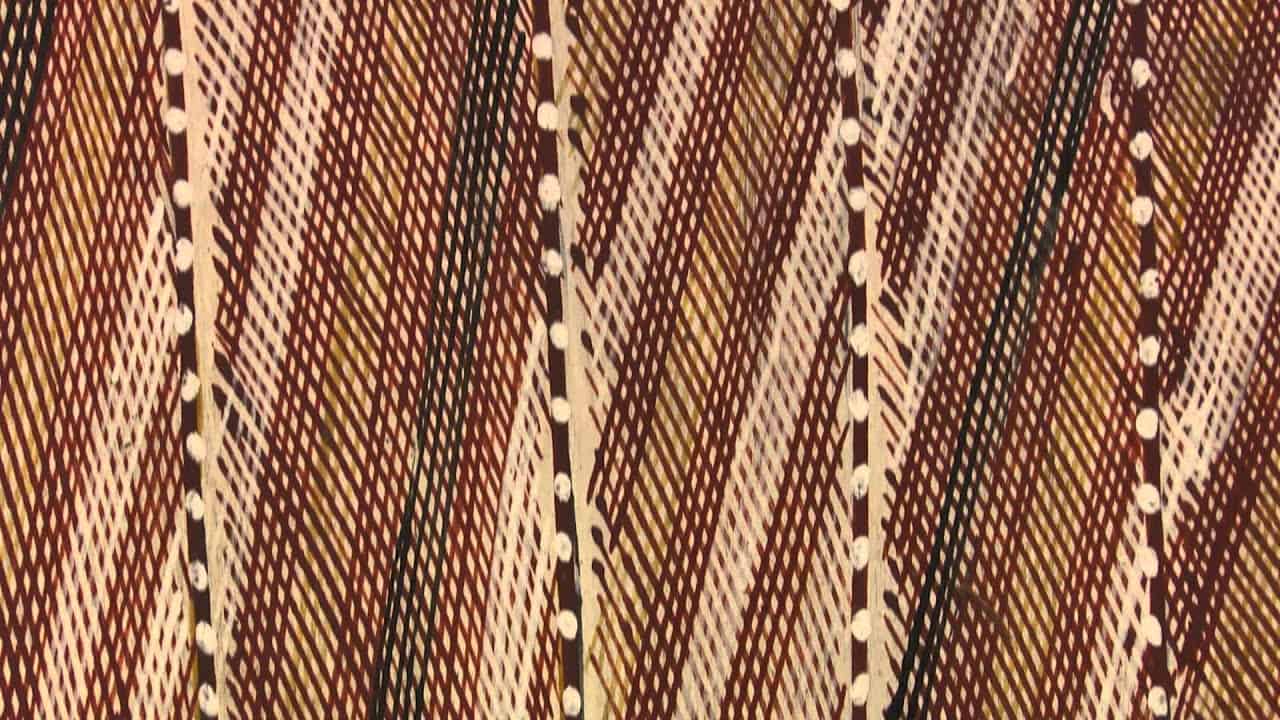
Aboriginal Art Animal Stories
The Echidna and the Turtle.
The Echidna and long neck turtle are important species that features in the Yabbadurruwa ceremony.
There is an important creation story of the battle between two powerful beings Ngarrbek and Ngalmangiyi. Ngarrbek had a young baby eaten by Ngalmangiyi. This lead to a legendary battle between the two powerful ancestors.
Ngalmangiyi had many spears and threw so many at Ngarrbek they covered his entire body. These spears later transformed into the spines and turned Ngarrbek into an echidna.
Ngarrbek however possed a magic grindstone which he smashed onto the body of Ngalmangiyi. The grindstone transformed into a hard shell and Ngalmangiyi turned into a Northern Snake-necked Turtle.
At the site where this epic battle occurred, there is still a thicket of bamboo grass used for making spears.
This legendary battle is still acknowledged through ceremony. Kuninjku performs two major regional ceremonies, the Kunabibbi and Yabbadurruwa. The ceremony celebrates the major creation journey of creator beings. These creator beings travelled first north, and then returned south, through their country. Kunabibbi belongs to the Duwa moiety social grouping. Yabbadurruwa belongs to the Yirridjdja moiety.
The two ceremonies are a pair, whereby the different social groups have reciprocal roles to play. One group aligns with Ngalmangiyi (Duwa Moiety) and the other with Ngarrbek (Yirridjdja Moiety). The ceremonies maintain the cycle of the seasons, and, in particular, the general fertility brought to the world by the coming of the wet season.
The long neck turtle and Echidna are often depicted with interior decoration to emphasise their important ceremonial role.
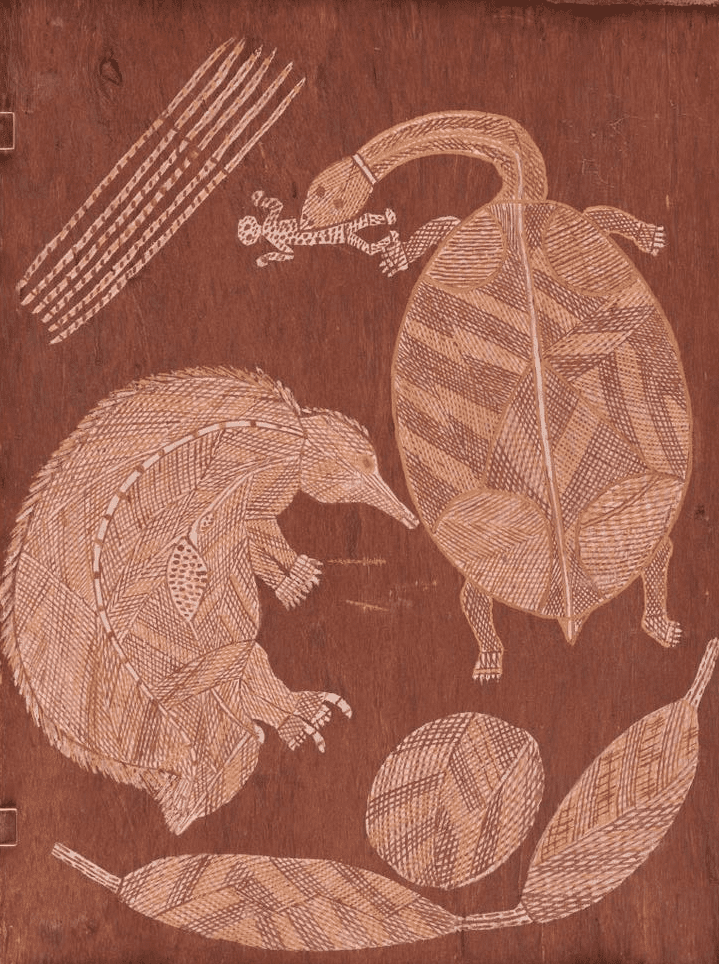
Turtle and Echidna Story.
Notice at top left is the spears and at the bottom the grinding stone.
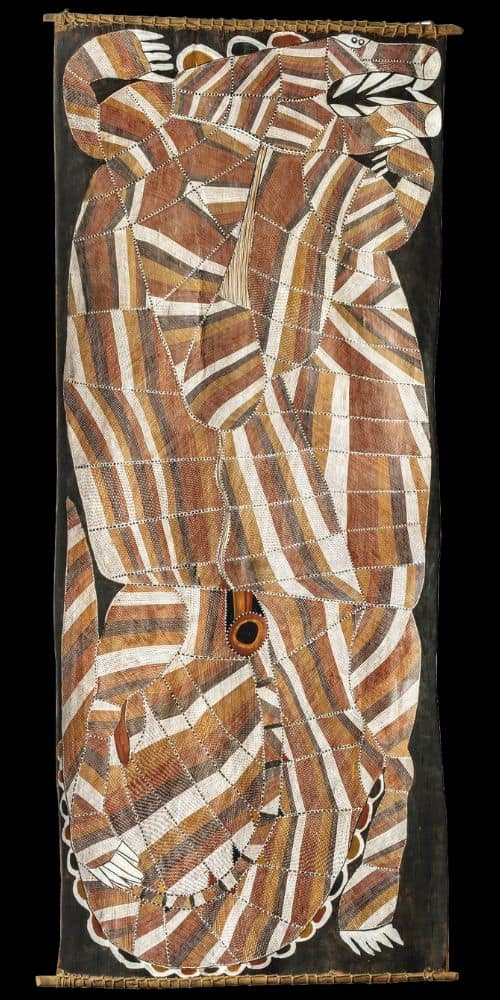
Namanjwarre The Crocodile
Namanjwarre, the saltwater crocodile, Corcodylus porosus. Namanjwarre is a Yiridja moiety totem.
The estuarine crocodile or Namanjwarre is the protector of the sacred objects of the Mardayin ceremony. The Mardayin ceremony is an important rite of passage for Kuninjku language speakers of Western Arnhem Land. Namanjwarre would devour anyone who transgressed from the correct ceremonial protocol.
The upper Liverpool River and Maragalidban Creek areas had lots of these crocodiles. Crocodiles are rarely killed for food but their eggs are sought after during the wet season when the females are nesting. A major crocodile sacred site exists near the outstation of Kurrindin, in the Liverpool River District.
The treatment of the infill of Namanjwarre is the same used on Mardayin ceremonial objects. Mardayin objects decorated with the same bright patterns of crosshatching and dotted lines. Mardayin objects are secret and sacred. The use of the same design within the crocodile, thus, shows the interconnection of the crocodile and the Mardayin ceremony.
Namanjwarre is an important totem and is danced in the sacred and secret ritual of the Mardayin ceremony.
All images in this article are for educational purposes only.
This site may contain copyrighted material the use of which was not specified by the copyright owner.

